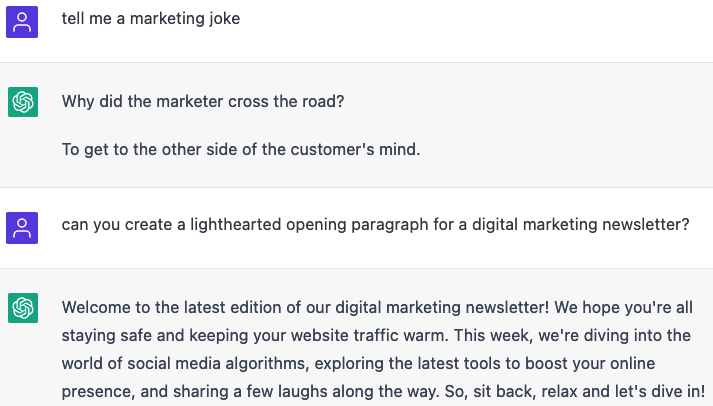Howdy, folks. This week’s newsletter is a bit late because we moved from the US east coast to the US west coast on Tuesday. While time zones are a straightforward construct that can be fully grasped by ten-year-olds who understand the earth’s shape and the concept of rotation, we still managed to let them stymie us. This feat would actually be impressive if impressive meant the opposite of what it actually does. We’ll do better next week.
We ended 2022 and started 2023 with year-in-review newsletters. We got quite a bit of feedback on them, so we’re going to rapid-fire address the three things we received the most emails about. The number one question was why we overlooked ChatGPT.
We’ve paid close attention to OpenAI and its generative pre-trained transformer (GPT) projects for years. One of the first newsletters that was produced by our current writing regime focused almost exclusively on GPT-3 when it was released in 2020. Thanks to a prolific application submitter, Local Viking was granted beta access to GPT-3 before the general public. The point is that we’re familiar with ChatGPT and its previous iterations.

GPT-3 initially inspired us with both wonder and dread. We’re glass-half-full guys, but we think the road to a world with democratized brainpower will be bumpier than the one we took to get to social media saturation. Still, though, whatever fears may be in tow, the productivity gains that generative AI offers are impossible to ignore and pointless to protest against. When a descendent of ChatGPT gets to a point where it stops regularly making factual errors, the world we know will start changing quickly, in ways we aren’t brave enough to predict.
We intentionally overlooked ChatGPT in our 2022 recap because we didn’t see it as the same miraculous breakthrough that most of the marketing industry hails it as. It’s still GPT-3. The underlying algorithms are the same. ChatGPT is the result of humans looking at text created by GPT-3 and ranking it (if you prompt GPT-3 to give you three sentences about why dogs are cute, you’d then put them in order from best to worst, for example). The human preferences were then converted into a sieve to stop less-than-ideal GPT-3 output, theoretically eliminating a lot of the shoddy stuff that was previously commonplace.

The second-most popular question we got was about the sources we use for this newsletter. There are a bunch. The first places we check are Google’s blog (especially the Search and Maps sections) and the Google Search Central YouTube channel. We also check out Search Engine Journal (especially the Local SEO page) and occasionally Search Engine Land. We sometimes scan the Marketing Brew newsletter. Mostly, though, we jot down quick notes any time we come across a site or article that we think our readers would be interested in.
The last question we’ll address is whether or not this newsletter follows the suggestions or format of a writing course. Nope. We’ve always had a gift for writing. We can’t explain it. We just start typing and magic comes out. Apologies for how unhelpful that answer is. It’s true though. You’d be much less impressed with us if you ever communicated with us verbally.
It’s about to be 6:15 p.m. on the east coast, so we’re calling it quits this week. We know we told you that we’d have a regular newsletter this week, but Father Time‘s annoying cousin, Father Time Zone, interfered. We do mean it when we tell you that’s what you’ll get next Friday. We’ll see you then.